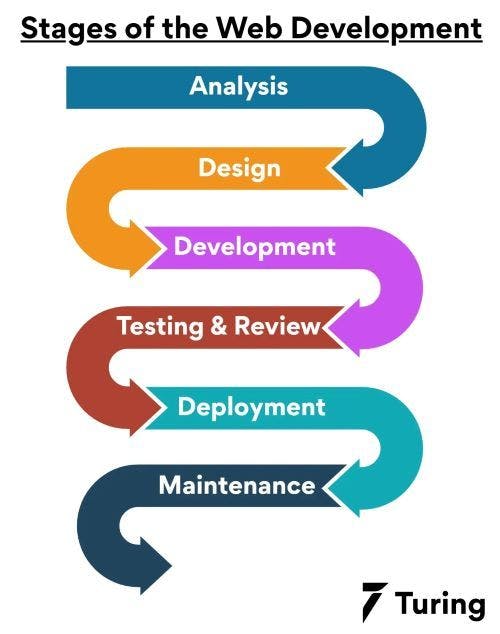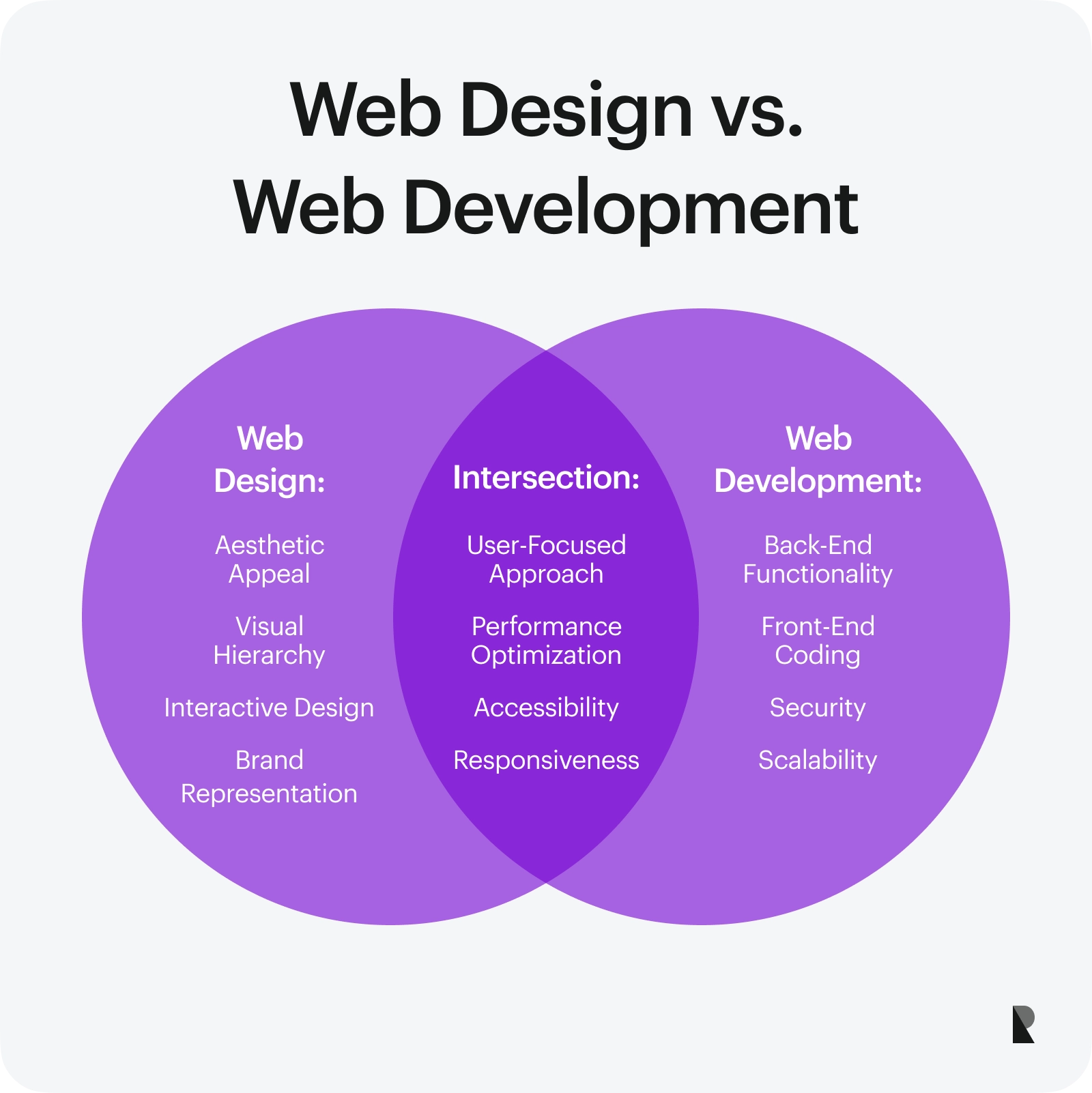Uncovering the Uses of Website Design for Enhancing User Experience
Web layout substantially affects individual experience across digital systems. By concentrating on customer requirements, developers produce web sites that are not just aesthetically appealing yet also functional and accessible. Trick aspects such as responsive style and instinctive navigating play critical roles in boosting usability. The obstacle lies in understanding just how these parts communicate to satisfy progressing individual assumptions. The expedition of these factors exposes insights that could transform electronic engagement.
Comprehending User Needs and Expectations
Just how can Web developers successfully align their creations with user needs and expectations? To attain this, designers have to engage in extensive individual research study to record the preferences, habits, and pain factors of their target market. Making use of techniques such as surveys, interviews, and use screening, developers gather valuable insights that lead their decision-making procedure.
Producing individual personas can even more assist in visualizing different individual sections, making sure that style options resonate with real customers. In addition, developers need to focus on instinctive navigation and clear phone call to action, which facilitate seamless interactions.
The Importance of Responsive Design
As users progressively access web sites on a variety of gadgets, responsive design has actually ended up being important for creating a positive customer experience. This strategy enables website to adapt perfectly to different screen dimensions, making certain that material is easily legible and accessible, no matter whether a user gets on a smart device, tablet, or desktop computer .
Receptive style enhances usability by supplying a consistent experience, reducing the need for too much scrolling or zooming. In addition, online search engine favor responsive web sites, which can improve a website's presence and reach. This style strategy likewise improves advancement initiatives, as it removes the demand for several versions of a site customized to specific devices.
Integrating responsive design not only meets individual expectations yet additionally lines up with contemporary Web criteria, promoting interaction and complete satisfaction. Eventually, it signifies a dedication to availability and inclusivity, essential components for any effective on the internet visibility.
Developing Instinctive Navigating
An efficient Web design not only includes responsive designs but additionally focuses on instinctive navigating, which is essential for directing customers through a website perfectly. User-friendly navigating assurances that individuals can quickly situate info without unneeded initiative. Crucial element consist of a clear menu structure, sensible categorization of content, and identifiable icons or labels.
Consistency in navigating placement throughout various web pages cultivates experience, improving individual convenience. Making use of breadcrumb tracks permits customers to track their place within the website, helping in backtracking and expedition. On top of that, enhancing navigation for mobile gadgets is basic, as several individuals accessibility web sites via mobile phones and tablet computers.
Incorporating a search bar can furthermore improve the individual experience, allowing fast access to details content. On the whole, intuitive navigation decreases irritation, encourages longer site brows through, and inevitably results in higher user fulfillment and interaction. By focusing on navigation design, Web developers can greatly improve the overall user experience.
Using Aesthetic Hierarchy Successfully
Reliable Web design depends upon the critical usage of visual hierarchy, guaranteeing that customers can easily browse content and grasp one of the most vital information at a glance. By focusing on aspects based on their significance, developers can lead users' focus towards vital areas, such as headlines, calls-to-action, and vital images.
Strategies such as size, positioning, contrast, and shade play essential roles in establishing this power structure. For circumstances, bigger text usually indicates higher significance, while contrasting colors can accentuate vital actions. Furthermore, constant placement and spacing help develop an organized format, making it much easier for customers to refine information promptly.
Furthermore, including imagery purposefully can boost understanding and retention of material. When utilized successfully, a well-defined aesthetic pecking order not only enhances functionality yet additionally improves the total customer experience, permitting individuals to involve meaningfully with the site's purposes.
Enhancing Readability and Access
Visual pecking order significantly impacts just how individuals communicate with an internet site, however similarly vital is ensuring that web content stays easily accessible and readable to all target markets. Efficient Web design uses clear typography, consisting of appropriate typeface dimensions, line spacing, and contrast to enhance readability. The use of high-contrast shade schemes can help those with aesthetic problems, while bigger message dimensions profit customers with reviewing problems. Additionally, incorporating alt text for images guarantees that individuals using display visitors can access critical info.
Designers should also consider the layout and framework of material, making use of headings and bullet indicate separate large blocks of message. This not only help skimming but also helps individuals with cognitive specials needs. Eventually, focusing on readability and access fosters an inclusive setting, permitting diverse audiences to involve completely with the web site's content (web development). By resolving these aspects, Web designers can substantially enhance the general customer experience
Including Engaging Visual Elements
Integrating appealing visual aspects is necessary for enhancing individual experience in website design. Shade psychology plays a considerable duty in influencing customers' feelings and habits, while interactive graphics can catch attention and motivate expedition. With each other, these elements create an extra vibrant and appealing on-line setting.
Relevance of Shade Psychology
The value of shade psychology in website design can not be overstated, as it plays a crucial role in forming individual assumptions and behaviors. Colors stimulate feelings and can affect how users engage with an internet site. Blue typically conveys trust fund and professionalism, making it a popular selection for economic institutions. Alternatively, red can set off seriousness and enjoyment, often utilized in sales promos. Recognizing the emotional impacts of shade makes it possible for designers to develop a cohesive aesthetic experience that reverberates with users. Additionally, constant color pattern boost brand identification and acknowledgment, making certain customers connect specific shades with particular brand names. Ultimately, thoughtful application of shade psychology can greatly enhance user involvement and satisfaction, making it an essential facet of reliable website design.
Utilizing Interactive Graphics
Involving individuals through interactive graphics can substantially boost their total experience on a website. These aspects, such as computer animations, infographics, and clickable visuals, cultivate a much deeper connection in between users and the web content. By urging expedition and participation, index interactive graphics can make complicated information a lot more digestible and keep individuals' focus much longer. Furthermore, they supply a chance for customers to engage with the website in a meaningful method, resulting in enhanced fulfillment and a greater probability of returning. Nonetheless, it is vital to stabilize interactivity with usability; overly intricate graphics may perplex users. Appropriately applied, interactive graphics can transform an easy viewing experience into an engaging trip, ultimately adding to enhanced user experience and website effectiveness.
Constant Testing and Improvement Techniques
Continual testing and improvement methods act as crucial parts in optimizing Web layout for customer experience. By carrying out repetitive testing, developers can gather real-time responses on customer interactions, allowing them to recognize pain factors and locations for improvement - website design. A/B screening, use testing, and warmth mapping are effective methods that give understandings right into individual actions, allowing educated layout choices
These approaches encourage a culture of ongoing improvement, rather than an one-time launch. Web designers can use analytics tools to monitor efficiency metrics, such as bounce prices and conversion rates, which lead necessary adjustments. Regular updates based upon customer comments not only boost capability but also foster customer fulfillment and loyalty.
Ultimately, continual testing and renovation develop a responsive Web layout atmosphere where user experience is focused on, making sure that the site develops along with individual requirements and technological improvements. This proactive technique brings about a more interesting and effective online existence.
Regularly Asked Questions
Exactly How Can Color Psychology Impact Customer Experience in Web Design?
Color psychology considerably influences user experience in Web style by leading and evoking emotions actions. Various shades can develop organizations, enhance readability, and impact user involvement, ultimately forming understandings of a brand or website's capability.
What Duty Does Typography Play in User Interaction?
Typography greatly affects user interaction by improving readability, establishing power structure, and conveying brand name personality. Reliable typeface choices can record interest, evoke feelings, and overview individuals via content, inevitably boosting overall communication and contentment with the site.

Just How Do Cultural Differences Impact Web Layout Preferences?
Social differences greatly influence website design choices, affecting shade options, format, navigating, and images designs. Recognizing these variants enables developers to create more appealing and relatable experiences tailored to varied individual backgrounds and expectations.

What Devices Can Aid Examination User Experience Effectively?
Numerous tools, including Google Analytics, Hotjar, and UsabilityHub, successfully examination customer experience. These systems supply insights right into user behavior, promote read here A/B testing, and gather comments, assisting designers make informed decisions to improve total usability.
Just how Usually Should an Internet Site Be Upgraded for Ideal Individual Experience?
A web site should be revamped every 2 to 3 years to keep perfect user experience. Routine updates guarantee the design stays modern, responsive, and aligned with developing individual requirements and technological advancements, enhancing general involvement.
Developing customer personalities can further aid in imagining different user sectors, guaranteeing that layout choices click for source reverberate with genuine customers. As customers progressively accessibility sites on a range of tools, receptive layout has actually come to be vital for creating a favorable individual experience. Incorporating engaging visual elements is vital for enhancing individual experience in Web design. Ultimately, continual screening and enhancement develop a responsive Web design setting where customer experience is focused on, ensuring that the site progresses along with individual needs and technical developments. Shade psychology substantially affects user experience in Web layout by stimulating emotions and leading actions.